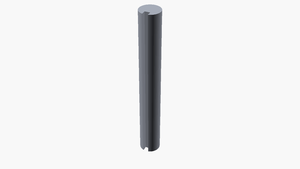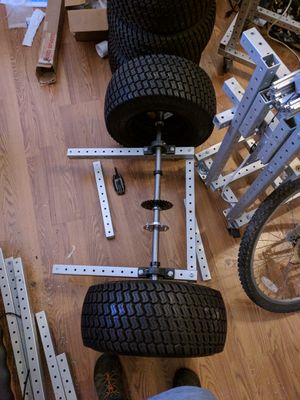Keyed shafts: Difference between revisions
From
No edit summary |
No edit summary |
||
| Line 9: | Line 9: | ||
=Approaches= | =Approaches= | ||
A round steel shaft with a [https://en.wikipedia.org/wiki/Key_(engineering) keyway] allows for similarly keyed interchangeable components to be positioned securely along it's entire length. Such a shaft can be manfactured from round stock with as little as a [https://en.wikipedia.org/wiki/Broaching_(metalworking) broach] and a hammer. | A round steel shaft with a [https://en.wikipedia.org/wiki/Key_(engineering) keyway] allows for similarly keyed interchangeable components to be positioned securely along it's entire length. Such a shaft can be manfactured from round stock with as little as a [https://en.wikipedia.org/wiki/Broaching_(metalworking) broach] and a hammer. | ||
* [https://www.surpluscenter.com/Power-Transmission/Shafting/Keyed-Shafting/1-x-36-Keyed-Shafting-1-2982-100-3.axd 1"x36" keyed shaft] | |||
* [https://www.surpluscenter.com/Power-Transmission/Shafting/Keyed-Shafting/1-x-72-Keyed-Shafting-1-2982-100-6.axd 1"x72" keyed shaft] | |||
=Development targets= | =Development targets= | ||
Revision as of 15:37, 26 March 2021


Introduction
Keyed shafts rotate inside axial bearings to transmit power. Keys are fit into keyways to fix wheel adapters, gears and sprockets, and other accessories to keyed shafts.
Challenges
Power transmission often requires rotating shafts with sprockets, brakes, pulleys, gears, wheels, and many other types of devices attached in unique configurations.
Approaches
A round steel shaft with a keyway allows for similarly keyed interchangeable components to be positioned securely along it's entire length. Such a shaft can be manfactured from round stock with as little as a broach and a hammer.
Development targets
- indexed shafts